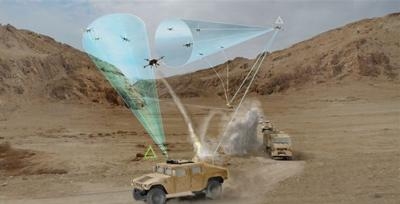DARPA Invites Input On Innovative, Affordable, And Rapidly Deployable Systems And Technologies To Defend U.S. Forces Against Quickly Evolving Airborne Threats
The rapid evolution of small unmanned air systems (sUAS) technologies is fueling the exponential growth of the commercial drone sector, creating new asymmetric threats for warfighters. sUASs’ size and low cost enable novel concepts of employment that present challenges to current defense systems. These emerging irregular systems and concepts of operations in diverse environments require technology advancements to quickly detect, identify, track, and neutralize sUASs while mitigating collateral damage and providing flexibility to operations in multiple mission environments.

To expedite the development of such capabilities and their potentially revolutionary benefits, DARPA has issued a Request for Information (RFI). This RFI seeks to explore ideas and approaches to improve protection of fixed and mobile ground and naval forces against a variety of sUAS threats and tactics.
“DARPA is interested in identifying novel, flexible, and mobile layered defense systems and component technologies to address this increasingly important issue as well as conventional threats,” said Jean-Charles Ledé, DARPA program manager. “We’re looking for scalable, modular, and affordable approaches that could be fielded within the next three to four years and could rapidly evolve with threat and tactical advancements.”
DARPA will review the RFI responses to assess technology and system relevance, potential performance capability, and technology maturity. Based on this review, DARPA may invite submitters to attend a Mobile Force Protection workshop at the Agency’s offices in Arlington, Va., to be scheduled for late September 2016. In addition, the information may potentially support the development of new DARPA programs that could enable a revolutionary layered defense approach to achieving mobile force protection, including counter-unmanned air systems (CUAS) capabilities.
The RFI invites short responses (five pages or fewer) that explore some or all of the following technical areas for both fully integrated systems and subsystems:
- Conceptual designs and performance capabilities, including substantiating preliminary performance data, if available, for the concept of operation(s)
- Technology maturity assessment, including data to substantiate technology maturity and identification of key risk areas requiring mitigation to enable system demonstration
- Program outline for maturing the system to the point where it would be ready for demonstration, including high-level rough order of magnitude (ROM) cost and schedule
- System affordability assessment
- Estimated size, weight, and power requirements
- Ability to address other threats (any part of the targeting chain)
- Ability to integrate third-party subsystems
To maximize the pool of innovative proposal concepts, DARPA strongly encourages participation from all capable sources including, but not limited to, private or public companies, individuals, universities, university-affiliated research centers, not-for-profit research institutions, foreign entities, and U.S. Government-sponsored laboratories.
(Image provided with DARPA news release: DARPA has issued a Request for Information (RFI) to explore ideas and approaches to improve protection of fixed and mobile ground and naval forces against a variety of threats and tactics posed by adversaries using small unmanned air systems [sUAS])
 ANN's Daily Aero-Linx (04.17.24)
ANN's Daily Aero-Linx (04.17.24) ANN's Daily Aero-Term (04.17.24): Jamming
ANN's Daily Aero-Term (04.17.24): Jamming ANN's Daily Aero-Linx (04.18.24)
ANN's Daily Aero-Linx (04.18.24) Aero-News: Quote of the Day (04.18.24)
Aero-News: Quote of the Day (04.18.24) ANN's Daily Aero-Term (04.18.24): Hold-In-Lieu Of Procedure Turn
ANN's Daily Aero-Term (04.18.24): Hold-In-Lieu Of Procedure Turn



